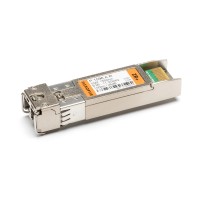Why using CDR / 3R / Clock-Data Recovery
As already discussed in my blog post History / Technical details Tunable DWDM SFP+ there are transceivers with integrated CDR (e.g. XFPs) and without it (e.g. SFP+). Now you probably have the following questions in mind:
This is why a 3R-regeneration will be used:
Short summary: XFP modules are built with CDR on-board as defined in the related MSA-Standard. To realize a cost effective and smaller form-factor this functionality doesn't become part of the SFP+ module. The idea was implementing CDR directly in the host-system of the SFP+ if needed. This would increase the price of the end-devices like switches and routers. A 2R-regeneration (Re-Amplification, Re-Shaping) is already part of the transceiver so it is not mandatory to implement a CDR function. To realize a standard link this is usually sufficient. Standard links are typically in-house wiring (Multimode), 10km, 20km and 40km point-to-point connections.
But if you are planning to set up a wavelength multiplexing (DWDM), an optical amplifier or transmitting over long distances, you should consider a complete 3R-regeneration. This can be achieved with a CDR chip set either in your DWDM-transponder, host-system or transceiver. Most of the DWDM transponder-systems do have a CDR functionality on board.
Please find our important SFP+ modules in our shop:
- What does CDR stand for?
- What do I use a CDR for?
- When do I have to use a transceiver with CDR?
- Which advantages come with a CDR?
What does CDR stand for?
CDR is the abbreviation for Clock-Data-Recovery.What do I use a CDR for?
Physical impacts are influencing the optical signal during the transmission over fiber optic cables. Due to the length of an optical link the signal suffers a time delay deviation which leads to problems in synchronization. In addition an optical fiber attenuates the signal which leads to a degradation of the signal. The physical impacts are linear and non-linear effects which are leading to wave distortion.This is why a 3R-regeneration will be used:
- Re-Amplification (regeneration of amplitude)
- Re-Shaping (regeneration of signal waveform)
- Re-Timing (regeneration of synchronization)
When do I have to use a transceiver with CDR?
This question was raised with the introduction of SFP+ modules.Short summary: XFP modules are built with CDR on-board as defined in the related MSA-Standard. To realize a cost effective and smaller form-factor this functionality doesn't become part of the SFP+ module. The idea was implementing CDR directly in the host-system of the SFP+ if needed. This would increase the price of the end-devices like switches and routers. A 2R-regeneration (Re-Amplification, Re-Shaping) is already part of the transceiver so it is not mandatory to implement a CDR function. To realize a standard link this is usually sufficient. Standard links are typically in-house wiring (Multimode), 10km, 20km and 40km point-to-point connections.
But if you are planning to set up a wavelength multiplexing (DWDM), an optical amplifier or transmitting over long distances, you should consider a complete 3R-regeneration. This can be achieved with a CDR chip set either in your DWDM-transponder, host-system or transceiver. Most of the DWDM transponder-systems do have a CDR functionality on board.
Which advantages come with a CDR?
There are a lot of effects on an amplified DWDM link which have a lot of impact on the transmission signal. For an error-free detection parameters like:- ONSR (Optical signal-to-noise ratio)
- BER (Bit-error-ratio)
- Input power value
- Data rate
- Degradation of the signal
Please find our important SFP+ modules in our shop:






Leave a Reply